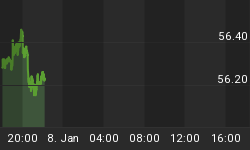Russia’s war on Ukraine is dealing a fresh blow to a global auto industry that is now fearful its production capabilities will fail to meet a demand by an even worse margin than supply chain challenges were posing prior to March.
Compounding the existing supply chain woes, pre-invasion, Vladimir Putin’s war on Ukraine means no more precious palladium from Russia, which could end up being the biggest supply chain problem the auto industry has faced yet.
It also means difficult securing components sourced from Ukraine, Reuters reports, noting that German carmakers are dangerously exposed because they obtain nearly half of their wiring harnesses from Ukrainian factories.
Against this backdrop, S&P Global Mobility has now lowered its 2022 and 2023 forecasts by 2.6 million light vehicles produced, each year. Though that may be a modest downgrade, with the agency’s executive director for global production forecasting, Mark Fulthorpe, writing that “the downside risk is enormous. Our worst-case contingency shows possible reductions up to 4 million units for this and next year.”
The global auto industry just can’t catch a break. It has spent the last two years trying to catch up with demand.
Just for 2022, consumer demand for new vehicles was much higher than this year’s achievable production, with supply some 10 million units short of demand. That’s a 12% gap in supply vs demand, and that was before the Russia war in Ukraine.
On top of that, the semiconductor shortage continues to taunt the industry. The global semiconductor shortage is forecast to continue for two more years.
Last year, U.S. President Joe Biden prioritized domestic semiconductor manufacturing and signed an executive order meant to address the global chip shortage.
Last month, the U.S. Senate passed the America COMPETES Act, which includes $52 billion in grants and subsidies for the semiconductor industry and $45 billion to improve supply chains.
In the meantime, vehicle prices continue to climb, both for new and used cars.
Now, as automakers face soaring metal costs as Russian supplies are at risk, consumers are likely to face even higher car prices soon.
According to CarGurus, values have gone up 40% on average compared to the last year. As for the new vehicles, the U.S. Bureau of Labor Statistics' Consumer Price Index Summary customers paid 12.2% more for new vehicles in January 2022 compared to January 2021–without the pressure of a metals supply crunch.

















